Asphalt 3D Review
|
|
See PixlBit's Review Policies

On 04/12/2011 at 01:19 PM by Nick DiMola Suprisingly, it’s not quite shovelware, but it is the definition of squandered potential. |

While there is some solid base work, it’s still a game you’re better off avoiding. Ridge Racer 3D will do a better job of satisfying your 3DS launch racing desires.
While I often don’t think the term “mixed bag” says much about a game, I think it speaks to the core of Asphalt 3D quite well. There’s a very even mix of good and bad, offering players what could’ve been a solid racing experience if it weren’t dragged down by some poor AI, technical issues, and cell phone game design. Players will find some solid racing mechanics underneath all the mess, fun tracks complete with shortcuts, as well as an assortment of challenges providing some necessary variety.
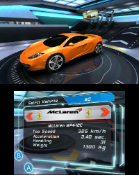
At first glance, I was really surprised by Asphalt 3D. My first couple races went down without a hitch and it didn’t have those characteristic shovelware attributes that I was expecting. Instead I was greeted by cars that handled smoothly, advanced drift abilities, gameplay in the vein of Burnout, and tracks that were reminiscent of Beetle Adventure Racing on the N64. I was stunned. However, further play began dredging up the underlying problems.
My first indication of the problems came when I had knocked down a few tracks. My competition began to ramp up in difficulty, forcing me to employ the drift mechanic to more tightly corner turns and build boost in the process. As a street racing game, I had to deal with oncoming traffic which hadn’t been a problem while racing normally where I had full control of the vehicle. It became clear while drifting that traffic pops into view extremely quickly and moves extremely fast, making it easy to crash into while performing drifts crucial to success. While crashing typically will put a damper on your performance, it isn’t usually a deal breaker when it comes to winning the race. Not in Asphalt 3D. I had a number of races where I’d crash in the second or third lap and couldn’t ever catch up to even second place, much less first.
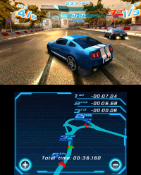
This problem, while massive, can be assuaged to a degree by either jumping in a new vehicle and/or upgrading your vehicle’s parts. The problem here is that you unlock both parts and vehicles by leveling up your profile. As you successfully complete any given challenge/race in the game, you earn experience points. Unfortunately, lost races contribute no experience which means that you have the distinct possibility of needing to grind through easier races to build experience by simply beating the race or completing the extra challenges.
This process is further diluted by the acquisition of money which is used to purchase new parts and cars after they are opened up by reaching a certain level. Being that you earn ungodly amounts of money from each race, its inclusion makes no sense. Once you earn a new level, it should’ve automatically upgraded your vehicle and unlocked new ones instead of forcing a scouring of the menu for new parts and cars to spend money on. Surely Gameloft could’ve settled on one of these progression systems for Asphalt 3D to keep the process simpler and more accessible.
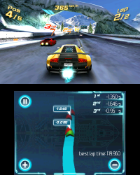
Further problems with the racing became apparent even after getting back on equal ground with my vehicle. For one, the boost system felt broken in some regard. Players can choose to use their boost meter in different ways, one of which is progressively more powerful boosts, while the other is a switch into hyper speed mode when you have a full boost gauge. I found that deploying up to three boosts incrementally was far more effective in moving me forward faster than waiting for my full boost gauge to engage in the hyper speed mode. Hyper speed seemed to move me no closer to my competition due to some bizarre rubberbanding AI, which was not apparent when deploying incremental boosts.
The physics at times felt a little wonky as well. At times I’d hit jumps straight on and it would throw me off balance, sending me bounding from wall to wall of the track as I attempted to gain control of my vehicle at high speed. This unpredictable behavior at times made me question whether or not it was worth taking a given shortcut because I might suffer a loss of time in my attempt to gain it.

Police enforcement is also featured in the game and when they are deployed, they hardly feel like a real threat and behave more like an ADD child attempting to garner your attention. Most of the time they are an annoying distraction that pops in and out of view resulting most typically in a crash, which pauses the action to show things from a different angle in slow motion. They’re such a half-hearted inclusion they should’ve been left out in the first place.
Though the game can be commended for including a variety of different challenge types, it feels very much like a “me too” approach to matching up with the Burnout series rather than some meaningful inclusion. Most boil down to racing to the finish line as quickly as possible, and those that don’t are without boundaries, allowing you to turn around and earn all of the points you still need to complete the challenge properly.
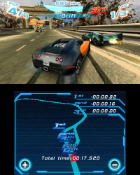
The real shame in all of this is that the core mechanics of Asphalt 3D are actually very good. Handling the vehicles feels good and the arcade focus makes for fast-paced gameplay that is preferable for the handheld platform. The tracks are another impressive part of the package. While the shortcuts are foretold on the map on the bottom screen, they are still fun to take advantage of during the race. If you don’t make it a point to glance down, it can be very rewarding to discover them on a lap and exploit them on a subsequent one.
It’s hard to recommend Asphalt 3D when Ridge Racer 3D is also available for launch. While a number of tracks and some decent mechanics are in place, there are just too many flaws to overlook. I sincerely hope that Gameloft polishes up what we’ve seen here, as they aren’t too far from having something that could be truly great.








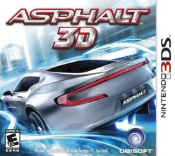


Comments